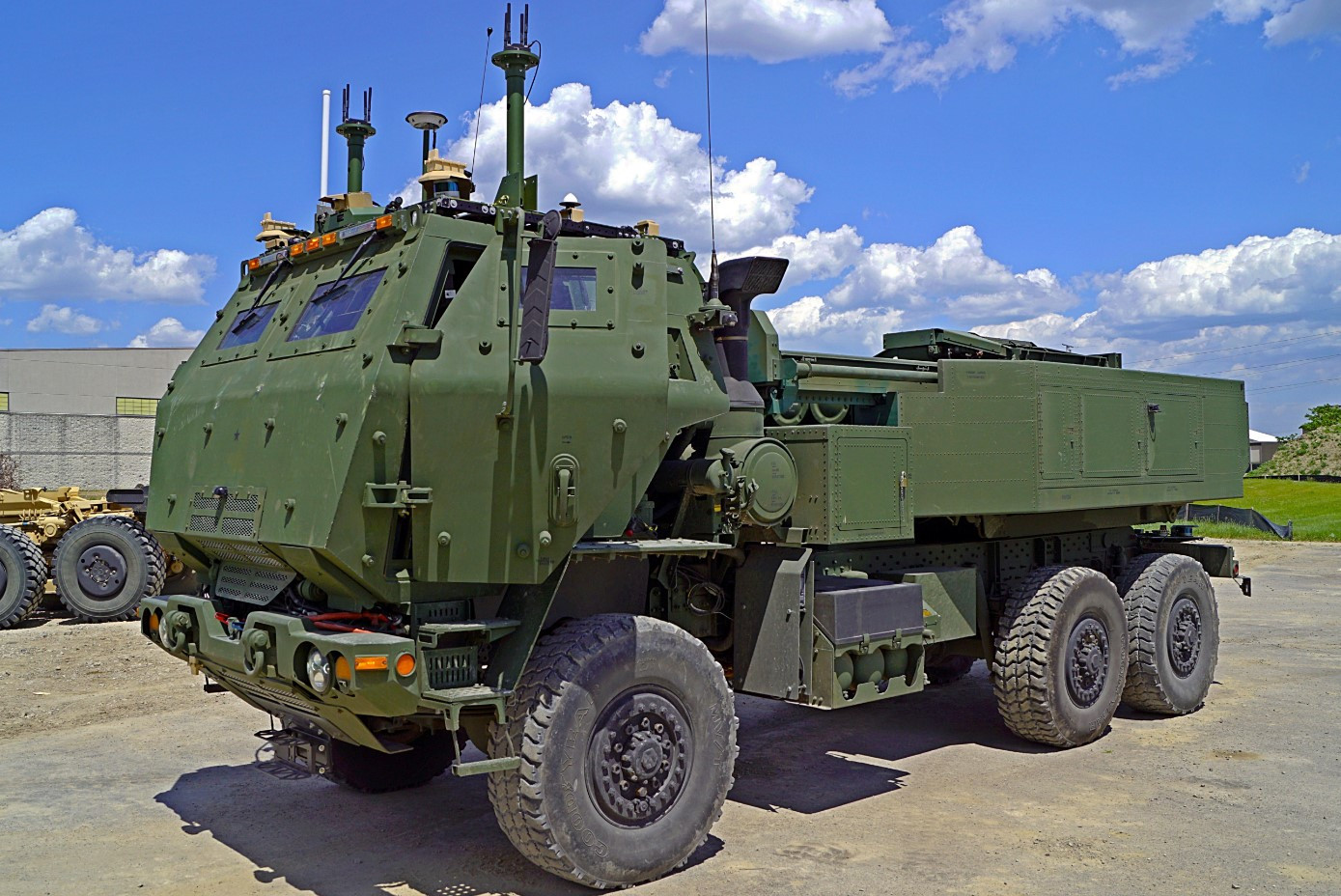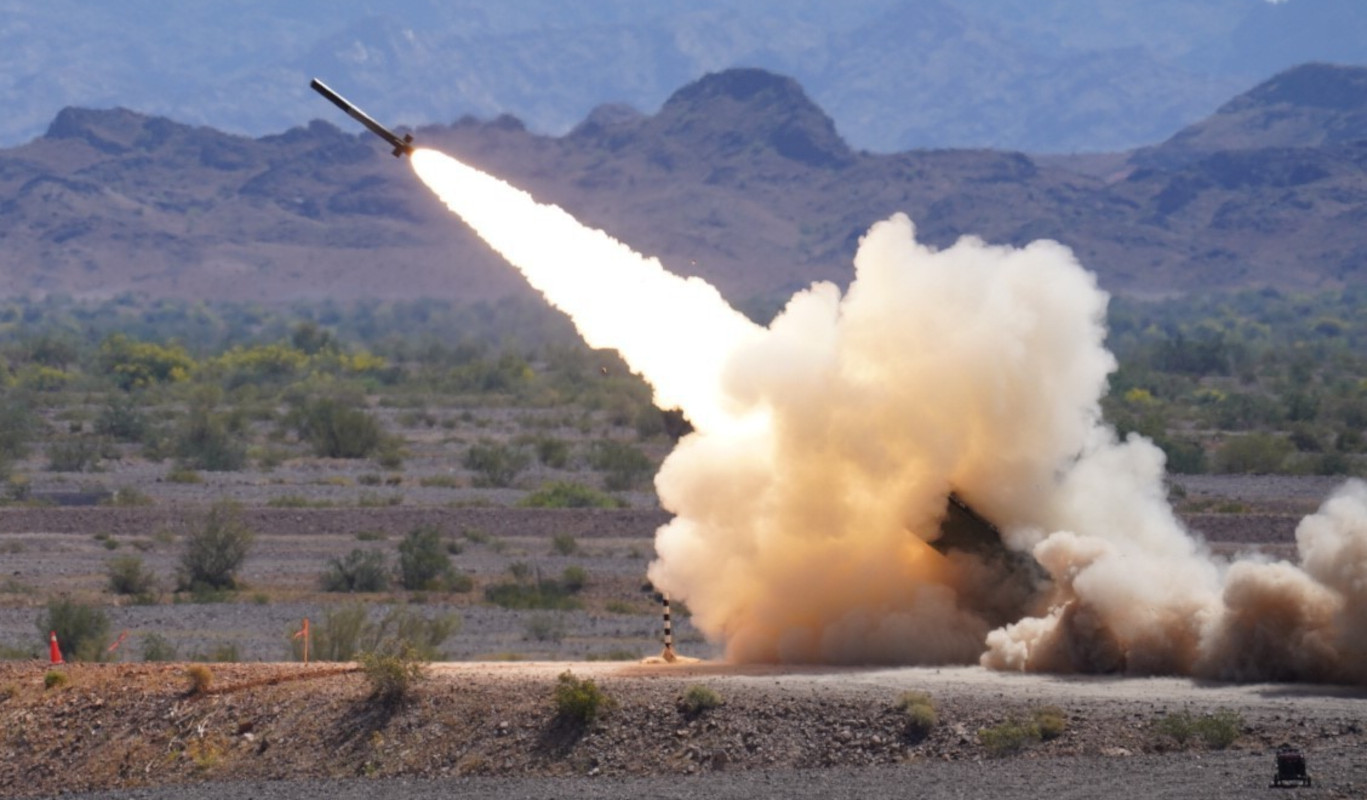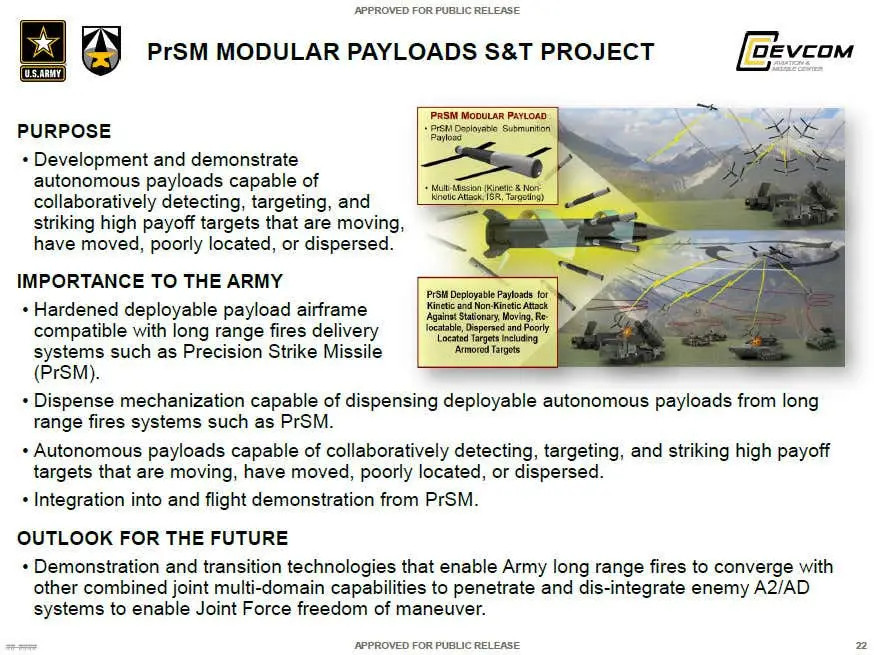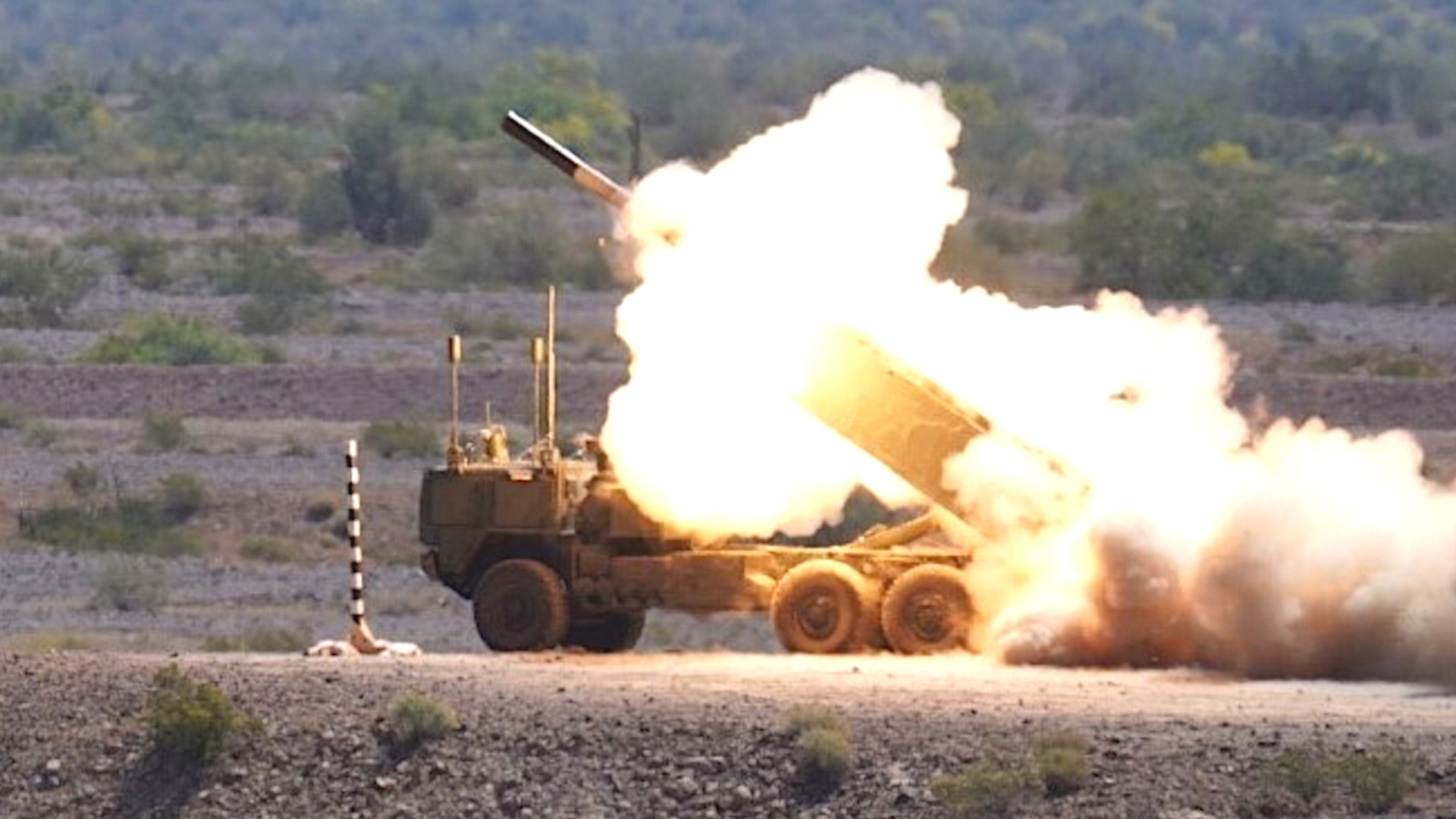The U.S. Army test-fired a prototype uncrewed derivative of the M142 High Mobility Artillery Rocket System (HIMARS) launcher vehicle for the first time last month. The Army is looking at this launch system, known as the Autonomous Multi-domain Launcher (AML), as a way to increase its capacity to conduct ground-based stand-off strikes on targets on land and at sea without the need for large numbers of additional personnel.
The Army’s Combat Capabilities Development Command’s Aviation & Missile Center (DEVCOM AvMC) and the Ground Vehicle Systems Center (DEVCOM GVSC) conducted the initial live-fire test of the AML at the service’s Yuma Proving Ground (YPG) in Arizona. Members of the Tennessee Army National Guard’s 1st battalion, 181st Field Artillery Regiment, a HIMARS-equipped unit, operated the AML during the event.

The AML is based on the M142, but is immediately visually distinguishable from the HIMARS vehicle in its truncated cab section. The Army has working on the AML concept since at least 2019 and has conducted other testing in the past. The service has also previously released pictures of what appeared to be a standard M142 modified to serve as a surrogate.

The cab-less AML is designed to be able to follow a waypoint-based route autonomously, including as part of a convoy. Once at a designated destination, it can be remotely operated either by personnel immediately on-scene or at some distance using a “teleoperation” control method.
In the lead-up to the “initial live fire [test], the AML successfully demonstrated each of its mobility modes: tele-op, waypoint navigation, and convoy operations,” according to an Army release.
“During its time at YPG [in April], the AML launched three RRPRs [Reduced Range Practice Rockets] in a successive ripple fire mission,” the release adds. “In all, six RRPRs were successfully fired from the AML in a demonstration of the launcher’s ability to maneuver under supervised autonomy from a hide location to a firing point, turn to an assigned heading, and execute fire control commands from a remote gunner position.”
The blunt-nosed 227mm RRPR has no warhead or guidance system and a maximum range of around 10 miles. It is intended to allow HIMARS crews, as well as those operating tracked M270 Multiple Launch Rocket System (MLRS) vehicles, a low-cost option to conduct limited training involving live launches, especially in areas where firing full-range rockets is not possible due to various constraints.

The AML is designed to use the same ammunition ‘pods’ as the HIMARS and the MLRS and is therefore capable of firing the full suite of available 227mm rockets, including various precision-guided types, as well as Army Tactical Missile System (ATACMS) and Precision Strike Missile (PrSM) short-range ballistic missiles. HIMARS and MLRS are both combat-proven systems, including now in Ukraine where they have been used to fire with 227mm guided artillery rockets and ATACMS ballistic missiles to significant effect.
The Army is separately pursuing additional variants and derivatives of the PrSM, including an anti-ship version and an extended-range type capable of hitting targets up to 620 miles (1,000 kilometers) away, which should be compatible with AML, as well as HIMARS and MLRS. The baseline version of PrSM, which the Army is starting to field now, has a maximum range of at least 310 miles (500 kilometers). The service has also been looking at future PrSM versions loaded with novel payloads, including swarms of loitering munitions.

In the past, the Army has discussed potential scenarios for the AML involving the rapid deployment of the launchers, potentially together with crewed HIMARS, to disrupt an opponent’s anti-access and aerial (A2/AD) capabilities and otherwise hold a variety of targets on land and at sea at risk. Like the M142, the AML can delivered to forward locations, including remote and austere sites, via C-130s and other larger cargo aircraft, as is depicted in the video below.

The Army has a clear eye on the potential value of the AML in a future high-end conflict in the Pacific against China. In 2021, the service conducted a test involving the airlifting of a prototype or surrogate AML onto several simulated “islands” at Fort Sill in Oklahoma.
AML is just one of a number of new ground-launched long-range strike capabilities that the Army is in the process of developing and fielding. One of the service’s new Typhon systems, a crewed land-based missile launch system capable of firing SM-6 and Tomahawk missiles, made its inaugural deployment to the Pacific region in April, touching down in the Philippines for an exercise.

In addition to the operational flexibility they could provide, AMLs also present important benefits when it comes to reducing risk and overall personnel requirements over crewed launch systems. Compared to a traditional Army HIMARS unit, in particular, a smaller number of soldiers could operate a similar number of AMLs and do so from at least some distance, helping to limit their vulnerability to enemy counter-attacks.
The AML’s continued development now also comes as the Army is looking to significantly shrink its total authorized force posture as part of a broader restructuring effort, as you can read more about here.
Overall, the Army says that AML will give it “a three-times increase in fire power and magazine depth” through the addition of extra “launcher platforms to mass fire with minimal impact on force structure manning.”
It is worth noting here that the U.S. Marine Corps is in the process of fielding multiple variants of a remotely-operated uncrewed launch vehicle based on the 4×4 Joint Light Tactical Vehicle (JLTV) called the Remotely Operated Ground Unit for Expeditionary Fires (ROGUE-Fires) for many of the same reasons. There are currently Marine ROGUE-Fires vehicles configured to launch Naval Strike Missile (NSM) anti-ship cruise missiles and ones set up to fire versions of the Tomahawk cruise missile. A type capable of using the same ammunition pods as HIMARS and MLRS has been discussed in the past, as well.
When it comes to AML, the Army says that the prototype uncrewed launcher is already scheduled for another live-fire test as part of the bi-annual joint service Valiant Shield 24 exercise this summer. With the testing at YPG, the service has already taken another step toward turning this capability into a reality.
Contact the author: joe@twz.com
